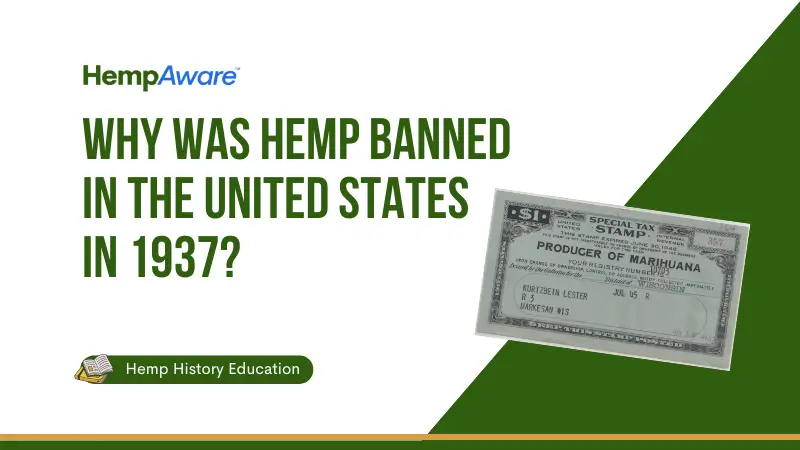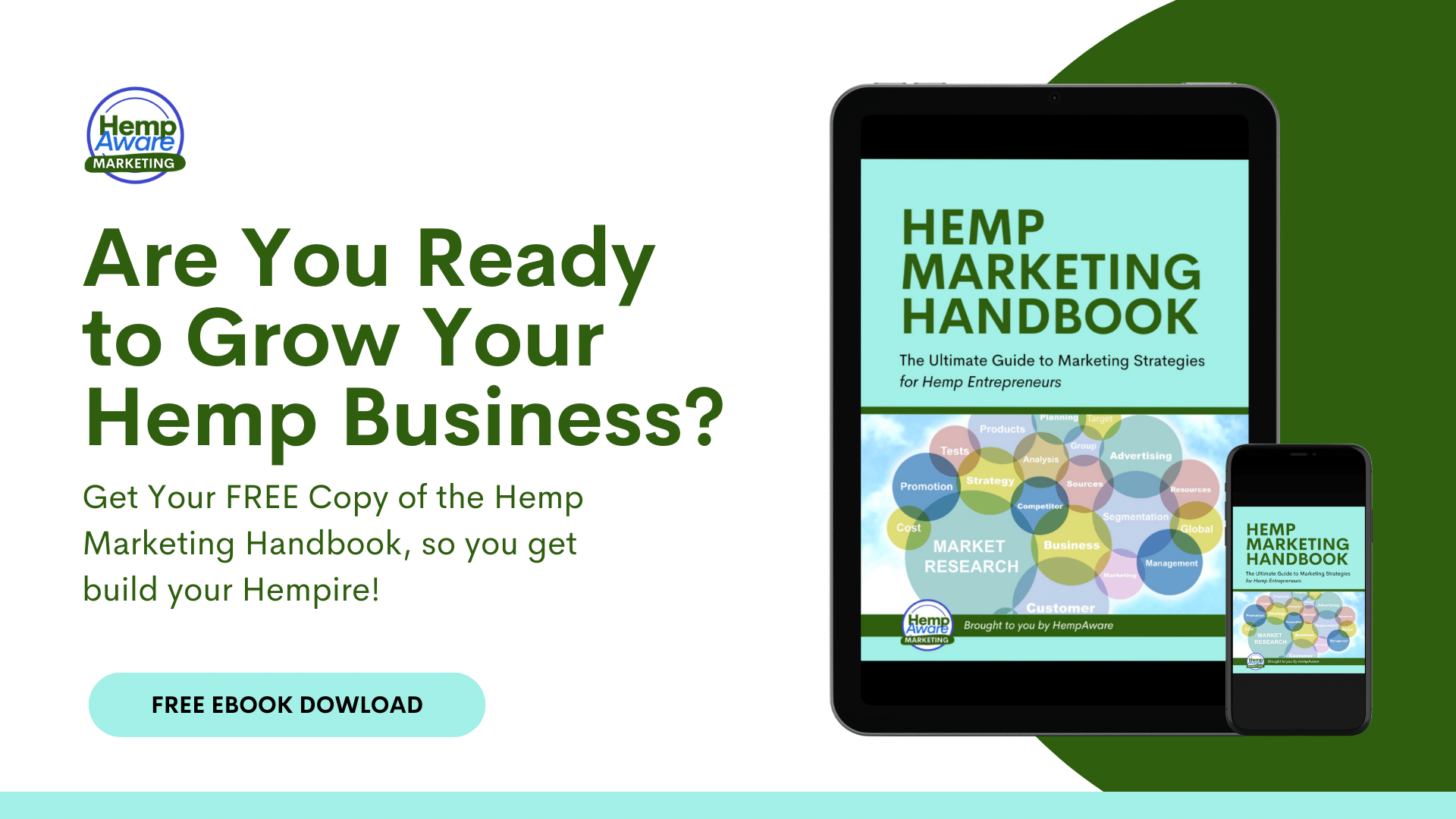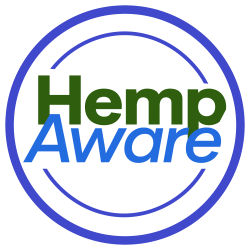I remember learning for the first time about why hemp was banned in the US way back in 1937.
I was about seventeed years of age, sitting in my little cottage in Costa Mesa, California reading The Emperor Wears No Clothes by Jack Herer.
i was blown away by what I read, and the fire inside me began to grow.
My passion and desire to bring hemp back to the people was about to start raging…
You see, hemp was once celebrated as a major crop worth billions in the U.S. (according to an article on hemp in Popular Mechanics Magazine).
As you likely know up until that article was written hemp was widely accepted and used for everything from paper, to food, to clothing, ropes and more.
Key Takeaways
- Hemp was banned in the United States in 1937 through the Marihuana Tax Act.
- The prohibition on hemp cultivation spanned from the 1930s to early 2000s.
- Social attitudes were influenced by racist ideas about marijuana and immigrants.
- Harry Anslinger’s anti-cannabis campaign played a major role in the stigmatization of hemp.
- The Marihuana Tax Act required restrictive tax stamps, crippling hemp production – and was a catch 22 situation.
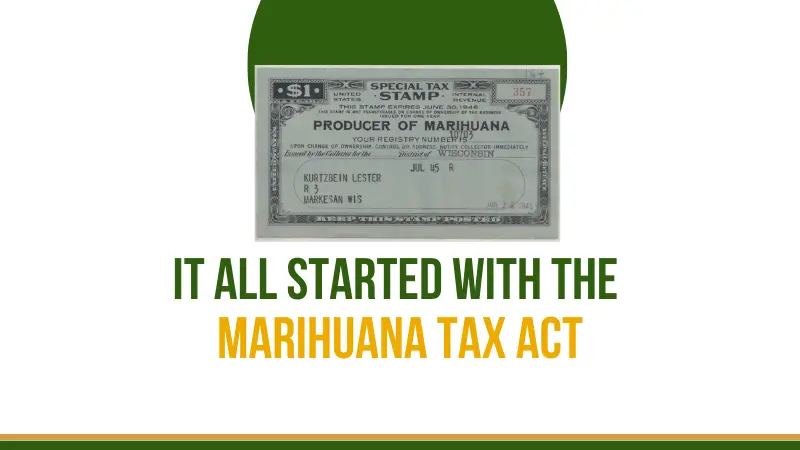
It all Started with the Marihuana Tax Act
But then, in 1937, it was banned by the Marihuana Tax Act.
And no that’s not spelled wrong, that’s just how they spelled it back then.
This ban resulted from a mix of changing social views (due to propaganda in the newspapers), political decisions, and hidden racial biases.
By the 1900s, fear augmented by racism against the plant and its users ultiamtely led to its prohibition.
Or at least that was what it seemed like on the surface.
Leaders like Harry Anslinger played a big role in this campaign against cannabis.
Their efforts targeted not only marijuana but also hemp (lumping it all under the same thing.)
This negative promotion and feamongering of the crop fueled the passing of the Marihuana Tax Act in 1937.
This act marked a clear break from earlier, more positive stances on hemp, which was even promoted by President George Washington and several other founding fathers of the United States of America.
This law required heavy taxes for growing hemp, effectively stopping its growth.
This situation lasted until the early 2000s, when attitudes towards hemp changed.
So let’s dive deeper into the allegedly realy reasons why hemp was banned in the U.S. back inn 1937.
Why Was Hemp Made Illegal in 1937?
In 1937, hemp got a bad name due to its link with marijuana, overlooking their big differences.
Hemp is mainly used for making seed and fiber based products such as ropes, twine, fabric, protein powerder and the like and doesn’t make people high because it has very little THC – the psychoactive compound in cannabis sativa.
This mix-up was key to banning both plants together, and is very likely a deliberate attache on this plant.
How Did Hemp and Marijuana Differ in 1937?
Back in 1937, people didn’t often know the difference between hemp and marijuana.
Unlike marijuana, hemp doesn’t get you high.
It was used for things like making clothes, rope, and paper.
And when it came to maijuana, everyone knew what cannabis was, because it was in the pharmacopea and medical text books and used throughout history for all sorts of conditions.
But, the fear around “marijuana” at that time made it hard to see hemp’s value.
With all the confusion, and the introduction of this new word ‘marijuana’ people didn’t realize what was really going on.
What Role Did the Marihuana Tax Act of 1937 Play?
The Marihuana Tax Act of 1937 is the main reason hemp became illegal.
This law lumped hemp with marijuana and made growing it very hard by putting high taxes on it.
To grow hemp, people needed a special tax stamp, which was rarely given out.
This virtually stopped hemp farming altogether. Some say it was to avoid competition with cotton and other big industries such as the petrochemical, lumbar and pharmaceutical industries, which you can learn a lot more about in Jack Herer’s book The Emperor Wears No Clothes.
Who Was Harry J. Anslinger, and What Was His Influence?
Harry J. Anslinger led the fight against both marijuana and hemp as the first head of the Federal Bureau of Narcotics.
He spread fear with made-up stories to make people afraid of this god-given miraculous plant, especially targeting minority groups.
His intense efforts got the laws changed, making both marijuana and hemp illegal and convincing everyone that it was the right thing to do through their demonization and propoganda campaigns with William Randolph Hearst.
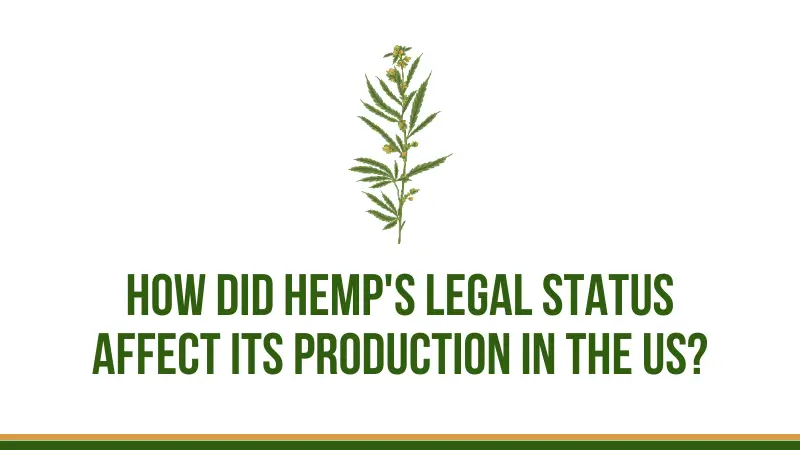
How Did Hemp’s Legal Status Affect Its Production in the US?
The laws around hemp have changed a lot over time, affecting how much we grow and use it.
In 1937, the Marihuana Tax Act made things hard by needing special tax stamps that were rare to get.
This cut back on growing hemp for industrial use almost entirely.
The difficulty in getting these stamps stopped big hemp farms from forming.
In fact, some historians say that the tax stamp was a catch 22.
Meaning, in order to grow hemp you had to get a license, but in order to get a license you had to be growing hemp… so no one could grow it.
What Restrictions Were Imposed on Hemp Cultivation?
The Marihuana Tax Act in 1937 said hemp growers needed tax stamps, but it was hard to get them.
So, growing hemp was very limited, and the industry couldn’t grow – in fact it completely died.
All of the textile manufacturing machines were shipped over seas, and the entire industry was shut down…
Jumping to 2018, the farm bill changed, allowing hemp with very low THC, making it easier to grow hemp.
Despite this, farmers still need DEA permits to grow hemp and must stick to strict rules to follow the law properly, like checking THC levels and doing background check.
How Did the Ban Impact Industrial Hemp Production?
After 1937, hemp and cannabis faced many hurdles, such as needing these rare tax stamps and being put in the same legal classification as drugs like cocaine and heroin. (eye roll) I know crazy, right?
This made cultivation imposible, as farmers needed DEA permits and it could only be done under extremely strict conditions for research purposes.
Was Hemp Made Illegal and Considered a Controlled Substance?
Indeed, hemp was basically made illegal in 1937, which was later reinforced in 1970 by considering it a drug. So at that point hemp was now a schedule 1 drug, which means there are no known medicinal benefits.
This classification labeled it alongside serious narcotics, needing a special permit for any hemp growing.
This situation led to very little hemp being grown until 2018, with the Farm Bill opening the way for legal growing under less strict conditions.
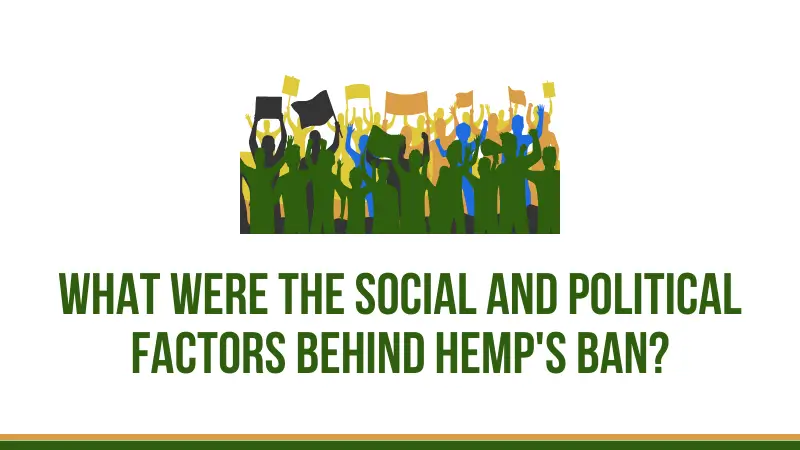
What Were the Social and Political Factors Behind Hemp’s Ban?
The ban on hemp in the United States and other countries was influenced by a combination of social, political, and economic factors.
Here are some of the key elements that contributed to hemp’s prohibition:
Economic Interests
Competition with Synthetic Fibers: In the early 20th century, the rise of synthetic fibers, such as nylon produced by DuPont, posed a significant economic threat to the hemp industry. DuPont and other companies had a vested interest in eliminating hemp as a competitor to their synthetic products.
Paper Industry: Hemp was a major source of paper, and the timber industry, which was more closely tied to powerful business interests, saw hemp as a rival. William Randolph Hearst, who had substantial investments in the timber industry, used his media empire to launch a campaign against hemp, emphasizing its association with marijuana.
Political Factors
Racial and Xenophobic Tensions: In the 1930s, there was a significant increase in immigration from Mexico, and marijuana (cannabis) became associated with Mexican immigrants. The term “marijuana” was popularized in an effort to exploit xenophobic and racist sentiments. Anti-marijuana campaigns often contained racially charged rhetoric, which helped sway public opinion against cannabis and, by association, hemp.
The Marijuana Tax Act of 1937: This legislation, spearheaded by Harry Anslinger, the first commissioner of the Federal Bureau of Narcotics, heavily taxed the production, sale, and use of marijuana. Anslinger played a key role in framing cannabis as a dangerous drug, often using sensationalist and racist propaganda. Although the act did not outright ban hemp, the regulations and taxes made it economically unviable for farmers.
Social Factors
Moral Panic and Propaganda: The 1930s saw a significant amount of propaganda depicting cannabis users as violent and morally corrupt. Films like “Reefer Madness” contributed to the moral panic, conflating hemp with its psychoactive cousin marijuana.
Lack of Public Awareness: There was a general lack of public understanding about the difference between hemp (low-THC) and marijuana (high-THC). The public and policymakers often did not distinguish between the industrial uses of hemp and the recreational or medicinal uses of marijuana.
Industrial Consolidation
- Industrial Lobbying: Powerful industrialists and their lobbyists played a significant role in pushing for legislation that would benefit their interests. The Hearst newspapers, along with other influential entities, lobbied heavily for laws that would suppress hemp production.
The ban on hemp was not the result of a single factor but rather a convergence of economic competition, political maneuvering, social prejudices, and a concerted effort by powerful interests to protect their own industries.
This multifaceted approach effectively marginalized hemp, despite its numerous industrial benefits and historical significance.
How Did “Reefer Madness” Influence Public Perception?
In 1936, a movie called “Reefer Madness” was released.
It greatly exaggerated the harm of using cannabis.
This film made many people afraid of cannabis, saying it was a big threat to society.
This made a lot of people believe that cannabis was very dangerous.
Because of this propoganda and programming, laws against drugs, including cannabis, got much stricter.
What Were the Concerns About Marijuana and Hemp?
People were worried about marijuana and hemp for many reasons.
Officials said using these drugs could harm mental health and make society worse.
For example, the Egyptian representative to the League of Nations claimed hashish was the main reason for mental health cases in their country.
These drugs were mostly used by the poor.
This created a divide between different social classes.
Mexico banning cannabis in 1920 also added to the belief that these drugs were very dangerous.
This fear led to laws against marijuana and hemp.
The laws were made to seem essential for protecting people’s well-being.
How Did Racial Politics Play into the Hemp Ban?
Racism played a big part in banning hemp.
In the U.S., cannabis was unfairly connected to Mexicans and African Americans.
This was part of a larger issue of racism and unfair treatment towards these groups.
Those pushing for the hemp ban used these false connections to their advantage.
They said cannabis was a danger because of these groups.
This fear of outsiders and racism helped pass stricter laws against cannabis.
As a result, the political and social environment of the time shaped laws that were harsh on hemp and marijuana.
These laws were unfairly focused on these substances, ignoring their actual benefits.
In conclusion, several factors, including fear tactics like “Reefer Madness,” discrimination, and racism, led to the ban on hemp.
The early 20th century saw the development of laws that targeted hemp and marijuana unfairly.
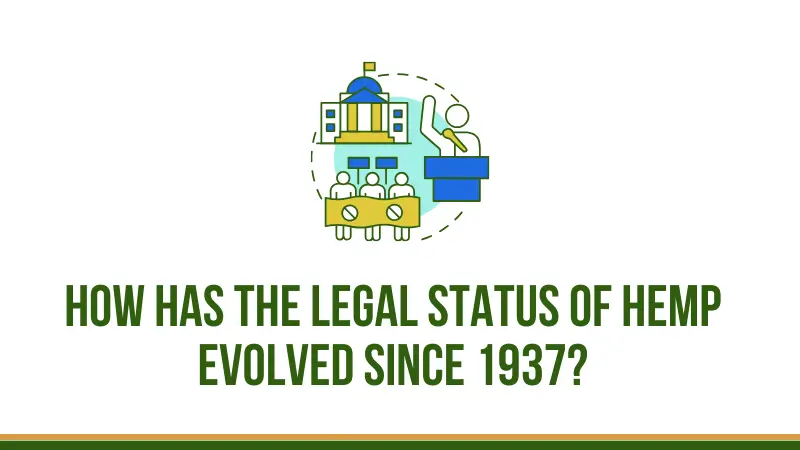
How Has the Legal Status of Hemp Evolved Since 1937?
Hemp’s legal standing in the U.S. has gone through big changes.
We started with a ban in 1937 because hemp could compete with other industries.
This all began with the Marihuana Tax Act, which kept hemp underground and underuntilized for years.
What Was the Impact of the Controlled Substances Act of 1970?
In the 1970s, hemp was classified as a seriously controlled substance. A schedule 1 drug.
This was through the Controlled Substances Act, placing it in the same group as drugs with no known medical use.
This made getting approval from the DEA to grow hemp very hard.
How Did the Farm Bill Influence Hemp Legalization?
The turning point came with the Farm Bills in 2014 and 2018.
The 2014 bill let states start programs to study hemp under a University for research purposes.
Then, in 2018, the Farm Bill considered hemp a regular crop again.
This big move allowed hemp to be grown throughout the U.S. as long as it had very low THC. levels of below 0.3%.
What is the Current Legal Status of Hemp in the United States?
Now, hemp is legal, but with specific, and some might say, tight rules.
These rules have opened up a whole new industry.
This industry can focus on many uses for hemp, from farming to making products.
The 2018 Farm Bill was a key step in recognizing hemp’s value for different products like textiles, hemp foods and CBD and other cannabioid based products.
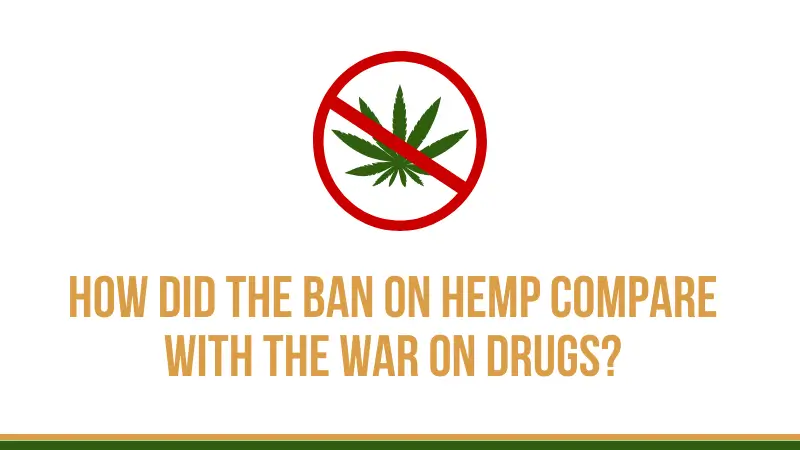
How Did the Ban on Hemp Compare with the War on Drugs?
The ban on hemp started with the Marihuana Tax Act of 1937.
It laid the groundwork for later policies, like those in the War on Drugs.
These measures were just as harsh, focusing on criminalizing and spreading misinformation about hemp and marijuana.
They didn’t clearly separate the two plants, leading to a broad ban under the Controlled Substances Act of 1970.
What Similarities Exist Between the Hemp Ban and Post-1970 Drug Policies?
Both the hemp ban and the War on Drugs used bad press and fear to sway public opinion.
The campaigns against hemp in the 1930s connected it with marijuana, causing panic and prohibition.
Similarly, during the 1970s, hemp and marijuana were put in the same strict category under the Schedule 1 label.
This shows how spreading stories can shape drug rules and affect businesses for a long time.
How Have Efforts to Legalize Marijuana Affected Hemp Reform?
Legalizing marijuana has played a big part in changing hemp laws.
The push to make marijuana legal started changing how people think.
It showed the importance of telling the two plants apart.
As more states allowed marijuana, questions about why hemp was banned started to rise.
The turning point was the 2018 Farm Bill.
It made growing and selling hemp legal, recognizing it as its own thing.
This step forward was also thanks to the wider push for marijuana legalization.
Together, they’ve brought a big change in how society views and uses these plants.
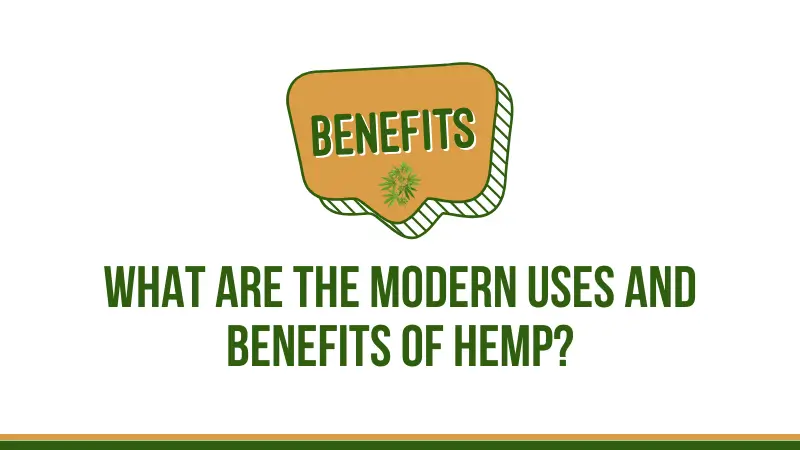
What are the Modern Uses and Benefits of Hemp?
Hemp is gaining popularity again because it’s versatile and eco-friendly.
It’s used in many industries, like making clothes, building materials, and green energy sources.
One cool use is in “hempcrete,” a sustainable building material.
Though it’s more expensive, its benefits for the environment are big.
What Are Some Industrial Applications of Hemp Today?
Hemp is now a key player in several industrial areas.
It’s used to make items like ropes, twine, yarn, fabric, foods, plastic, paper, and car parts.
It also helps produce biofuels.
The hemp industry is growing fast, especially since farming it became legal in 2018.
The future looks bright for this eco-friendly material.
What Are the Benefits of Legalizing Hemp Cultivation?
Allowing hemp farming has a lot of great effects. It’s a new source of income for farmers and leads to more sustainable products.
In nature, hemp grows fast and helps the environment by improving soil and cutting down on harmful emissions.
Though we need more research on its environmental benefits, the 2018 Farm Bill has started hemp on a path to success.
The 2018 Farm Bill and future updates to the U.S. farm bill create chances to improve hemp regulations.
They support a strong environment for hemp growth and new innovations.

Hemp Banned in the USA FAQ
Q: Why was hemp banned in the US in 1937?
A: Hemp was banned in the US in 1937 largely due to the Marihuana Tax Act.
This law, which confused the public by associating hemp with the drug cannabis, effectively made hemp illegal and criminalized its production and possession.
Q: How did the 1937 marijuana law affect the hemp plant?
A: The 1937 marijuana law, also known as the Marihuana Tax Act, affected the hemp plant by grouping it with marijuana as an illicit drug.
This made it illegal to grow hemp, even though hemp contains negligible amounts of tetrahydrocannabinol (THC), the psychoactive component in marijuana.
Q: Was hemp considered a Schedule 1 controlled substance?
A: Hemp itself was not initially classified as a Schedule 1 controlled substance.
However, the difference between hemp and marijuana was obscured by early legislation, leading to the de facto status of hemp as illicit under the same regulations that banned marijuana.
Q: What role did William Randolph Hearst play in the banning of hemp?
A: William Randolph Hearst, a powerful newspaper magnate, played a significant role in the banning of hemp by using his media influence to portray hemp and marijuana negatively.
His sensationalist stories often suggested that marijuana use led to violent crime and moral decay.
Q: Why was the production of hemp important before it was outlawed?
A: Before hemp was outlawed, it was an important crop for its versatility.
The hemp plant was used to produce a variety of products including rope, textiles, and even hemp paper.
Many historical documents were drafted on hemp paper due to its durability.
Q: What were the economic effects of hemp becoming illegal to grow?
A: The economic effects were significant, as industries that relied on hemp for raw materials were forced to find alternatives.
The outlaw of hemp also curtailed the US’s domestic hemp production, disadvantaging American farmers and industries that depended on hemp products.
Q: How did the classification of marijuana as a Schedule 1 drug impact hemp research and development?
A: The classification of marijuana as a Schedule 1 drug severely impacted hemp research and development.
This designation equated hemp with highly illicit drugs like LSD and heroin, stymying scientific research and agricultural advancements related to the hemp plant.
Q: What misconceptions did the Marihuana Tax Act of 1937 promote?
A: The Marihuana Tax Act of 1937 promoted several misconceptions, including the idea that hemp and marijuana were the same.
This misunderstanding led to the portrayal of the hemp plant as a dangerous illicit drug, despite its minimal THC content.
Q: Did any federal legislation change the status of hemp after it was initially banned?
A: Yes, the 2014 Farm Bill made significant changes to the status of hemp by allowing state departments of agriculture to create pilot programs for the research and cultivation of industrial hemp.
This was a step toward decriminalizing and reviving hemp production in the United States.
Q: How did societal attitudes towards minorities play a role in the banning of hemp and marijuana?
A: Societal attitudes towards minorities played a significant role.
Racist and xenophobic propaganda linked marijuana use to minority groups, insinuating that it caused moral degradation and incited violence.
Claims like “marijuana causes white women to date negroes” and “darkies think they’re as good as white men when smoking marijuana” were used to fuel anti-marijuana sentiment and justify the hemp ban.
Additional Reference Links
- https://www.clarkhill.com/news-events/news/the-evolution-of-cannabis-why-was-hemp-made-illegal/
- https://www.greenlifeorganics.com/cbd-blog/why-was-hemp-outlawed-in-the-united-states
- https://time.com/6268420/hemp-climate-solution/
- https://www.brookings.edu/articles/the-farm-bill-hemp-and-cbd-explainer/
- https://medium.com/@edwarddodge/why-was-marijuana-made-illegal-in-the-first-place-part-i-b9402aba92d6
- https://www.linkedin.com/pulse/evolution-cannabis-why-hemp-made-illegal-jari-jokela-knxuf

